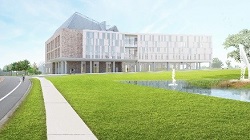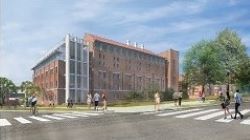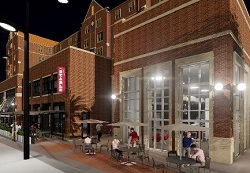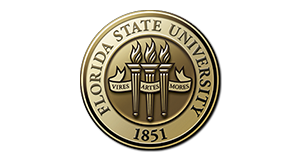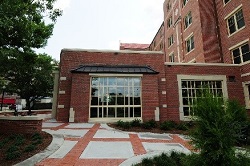 |
University Housing Replacement Phase 1
LEED (Certification in Progress) (NC v2009)
Completed: 2015
GSF: 208,858
Green building features:
- Promotes community connectivity by locating project within 1/4 mile of a variety of community services
- Reduces use of personal automobiles by promoting access to public transportation and reduced parking
- Low flow fixtures reduce water use
- Green power
- Provides controllability of lighting and thermal comfort systems for user comfort
- Provides day-lighting and views for most spaces
|
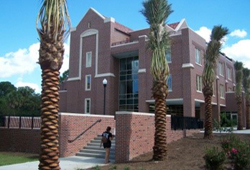 |
Honors Scholars Fellows House
LEED Silver (NC v2009)
Completed: 2013
GSF: 38,000
Green building features:
- Low-flow fixtures reduced water usage by 30%
- Energy recovery system utilizing enthalpy wheels to optimize energy performance
- Diverted 75% of construction waste from landfill
- Promotes daylighting and views throughout building
- Maximizes open space
- Roof reflects solar heat gain
- Low emitting finishes and construction materials
|
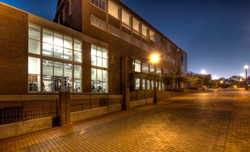 |
Wellness Center
LEED Certified (Pending) (NC v2009)
Completed: 2012
GSF: 178,133
Green building features:
- Energy efficient light fixtures with occupancy sensors
- Recovery units included in mechanical system
- Building water use reduced by 30% via low-flow fixtures
- Relocation of 2 matriarch oaks/preservation of green space
- Water hydration (bottle filling) stations
|
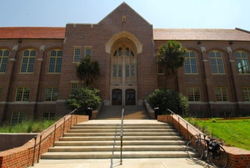 |
William H. Johnston Building & Expansion
LEED Gold (NC 2.2)
Completed: 2012
GSF: 175,735
Green building features:
- Drought tolerant landscape materials
- Complies with the 2030 Challenge and reduces energy use by more than 60% anticipated for a similar university building
- High performance building envelope
- Diverted 75% of construction waste from landfill
- Utilizes innovative recycled carpeting
- Employs daylighting and use of occupancy/daylight sensors
- Manages roof heat island effect
- Promotes use of public transportation and bicycles
- Conserved existing building structure
|
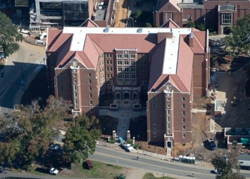 |
Traditions Hall
LEED Certified (NC 2.2)
Completed: 2011
GSF: 118,000
Green building features:
- Enhanced commissioning
- High density use of the site to maximize open space
- Water usage reduced by 35% via low flow fixtures
- Use of daylight in 95% of occupied space
- Optimized energy performance, including fixed blade energy recovery units, automated control systems and energy efficient lighting
- 50% construction waste diverted from landfill
|
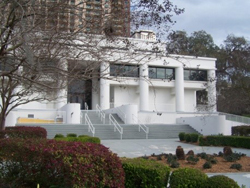 |
FSU Law/Advocacy Center
LEED Silver (NC v2009)
Completed: 2011
GSF: 52,000
Green building features:
- Drought tolerant landscape materials/native vegetation
- T8 Lamps and low wattage lighting with occupancy sensors
- Conservation of existing building structure
- Low-flow fixtures reduced water usage by 30%
- Low VOC content materials
- Construction materials utilize 10% recycled materials and 10% regionally acquired materials
- On-site chiller with variable speed mechanical refrigerant distribution
|
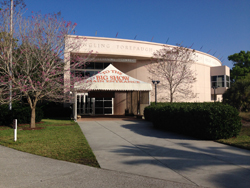 |
Tibbals Phase II
LEED Silver (NC 2.2)
Completed: 2011
GSF: 24,475
Green building features:
- LED lighting on second floor
- Chilled water loop
- Low wattage lighting with occupancy sensors
- Reflective roofing materials reduce solar heat gain
- Diverted 86% of construction waste from the landfill
- Maximized open space by providing vegetative cover greater than building footprint
- Reduced use of personal automobiles by adding no new parking
|
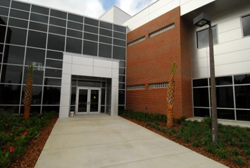 |
Aeropropulsion Mechatronics and Energy Building
Sustainable
Completed: 2011
GSF: 61,800
Green building features:
- Reflective roofing materials
- Low-flow fixtures reduced water usage by 30%
- High performance building envelope
- On site chiller and cooling tower
- Low wattage lighting with occupancy sensors
|
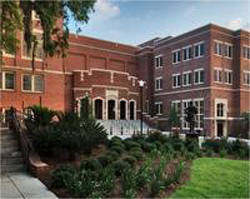 |
Ruby Diamond Concert Hall
LEED Gold (NC 2.2)
Completed: 2010
GSF: 68,939 (35,017 renovated, 33,922 new)
Green building features:
- Drought tolerant landscape materials and maximized open spaces
- Water conservation through use of efficient plumbing
- High performance building envelope
- Conservation of existing building structure
- Diverted 75% of construction waste from landfill
- Exemplary performance for access to public transit routes
- Indoor air quality enhanced through low emitting construction materials
- Mercury-free lighting
- Utilized local and regional materials to reduce carbon emitted during transportation
|
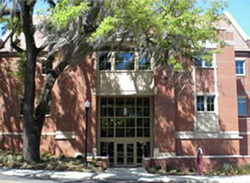 |
Center for Global & Multicultural Engagement (the Globe)
LEED Gold (NC 2.2)
Completed: 2010
GSF: 42,259
Green building features:
- Native vegetation without irrigation use
- Innovative wastewater technology
- Diverted 75% of construction waste from landfill
- Relocated existing matriarch oak tree, in lieu of removal, to provide shading and cooling of south facing glass and exterior plaza
- Promotes access to public transportation and bike use
- Construction materials utilize 10% recycled materials and 10% regionally acquired materials
- Low VOC content finishes
|
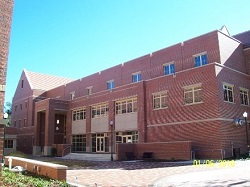 |
Dunlap Student Success phase 2
Sustainable
Completed: 2010
GSF: 47,250
Green building features:
- Connection to Community resources: transportation, retail, social
- Greenspace developed to maximize outdoor use
- No smoking facility
- Stormwater managed for both quantity and quality
- Reduced water use
- Construction materials promote long life cycle
|
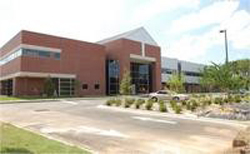 |
Materials Research building
LEED Certified (NC 2.2)
Completed: 2010
GSF: 61,689
Green building features:
- Promotes use of public transportation; bike friendly
- Enhanced building commissioning & refrigerant management
- Optimized energy performance, including automated control systems, frictionless HVAC compressors, and energy efficient lighting
- 50% construction waste diverted from landfill
- Reduced impervious area and restored habitat
- Improved stormwater quantity/quality
- Monitors delivery of outdoor air for indoor air quality improvements
- Utilizes low-VOC finish materials
- Reduced water use w/water efficient landscaping and low flow plumbing fixtures
|
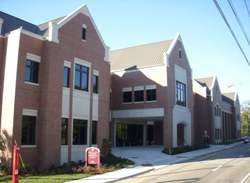 |
Turnbull Conference Center
LEED Silver (NC 2.2)
Completed: 2009
GSF: 73,217
Green building features:
- Use of low wattage mercury lighting with occupancy sensors
- Utilization of indoor chemical and pollutant source control measures
- Improved storm water quality/quantity
- Low-flow fixtures reduced water usage by 30%
|
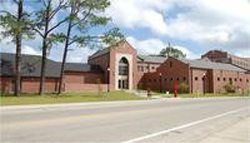 |
Human Performance Lab & Track Facility
LEED Silver (NC 2.2)
Completed: 2009
GSF: 1,083
Green building features:
- Bike friendly design; promotes access to use of public transportation
- Low-flow fixtures reduced water usage by 30%
- Energy recovery system utilizing enthalpy wheels to optimize energy performance
- Diverted 75% of construction waste from landfill
- 20% of construction materials acquired regionally
- utilizes low energy computer systems and AV equipment
- 75% of interior spaces employ daylighting strategies
|
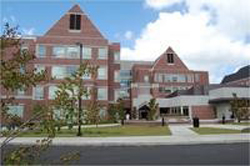 |
King Life Sciences Teaching & Research Center
LEED Certified (NC 2.2)
Completed: 2009
GSF: 180,126
Green building features:
- No new parking provided; bike friendly design; promotes access to public transportation
- Irrigation water reduced by 50% and building water use reduced by 30% via low-flow fixtures
- Regional construction materials constitute 40% of building materials
- Indoor air quality improved through use of low emitting paints, coatings, and carpet
- Exemplary performance for maximizing open spaces
- Fume hoods commissioned to ensure indoor environmental quality
|
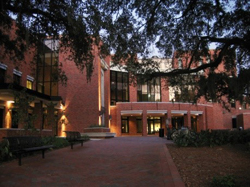 |
Mode L. Stone/College of Education Building Expansion
LEED Silver (NC 2.2)
Completed: 2009
GSF: 41,831
Green building features:
- Reduced site heat island effect by utilization of vegetative cover equal to building footprint
- Reduced building water use by 30% compared to a similar building
- Improved indoor environmental quality by use of low-emitting construction materials
- Use of daylight in 75% of the interior spaces
- 90% of interior spaces have view to outside
- Verification of thermal comfort design
- Utilized construction materials with recycled content
|
